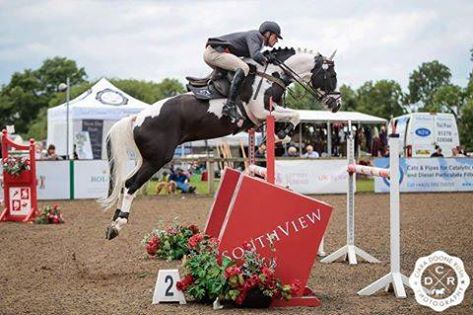Polydor
The history of Polydor goes back to the late 50’s when the then director of the Westfalien state stud, Dr Gerd Lehmann imported four Irish Thoroughbreds: Sinus, Papayer and Pluchino. Pluchino was an Ascot Stakes winner in the UK. In his first season, Pluchino produced two licensed sons, Perseus out of a mare by that influential anglo/arab sire of jumping horses, Ramzes, and Plutos out of a mare by the famed Hanoverian, Duellant. Perseus in his first season was bred to another daughter of Duellant, to produce, Pilatus.Pilatus was second in the licensing of 1967, and stood for ten seasons in Germany before he was exported to Holland, where he stood another five seasons. Pilatus returned to Westfalia in 1984, but not before he sired, Roemer {out of a Westfalien mare by Cryano} who has proven an influential dressage sire in both Holland and the United States, and Darwin, out of a mare by Pion.
Pilatus was the sire of two of the most influent stallions of modern times, Polydor and Pilot. Polydor is out of a mare by Fruhlicht I by Fruhsport. Polydor was approved in 1974 and stood at the Westfalien state stud until his death in 1999.
Polydor’s first international jumping star was Porter, ridden by Thomas Fruhmann and fourth at the European Championships in 1987, before being sold to Markus Mandli. In America, Gutsy Monroe was a success with Rodney Jenkins - while back in Germany, Panima took Otto Becker into the team for the WEG in Stockholm where they finished in 5th place individually in a silver medal winning team. Pamina went on the win the rich Calgary Grand Prix and the German Classic in Bremen before being sold to Italy. Otto Becker also enjoyed success with Argellith Bellenuit, while in England, Michael Whitaker’s Two Steps was good enough to be crowned WBFSH Horse of the Year 94/95. In Holland, Polydor offspring were also popular - Jan Topps had Sonora La Silla, while Bert Romp rode Burg’s Pretty Woman.
The Polydors are still performing with Beat Mandli riding Positano to team silver at the Sydney Olympics - and there are more to come since Polydor bred right up to his death, although in latter years the quality and volume of his semen became less reliable. In the last few years he stood at Warendorf there were a number of mares who instead of having the name of the stallion they were destined to breed with on the door of their stable, had a ‘?’ - this designated those mares whose owners wished to breed to Polydor, if and when, semen was available.
At this stage, no outstanding son has appeared to carry on the line, but there are a number of promising candidates in the wings.



